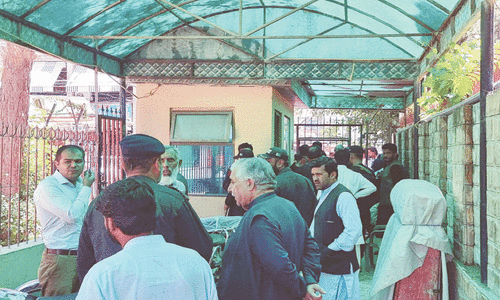A MAJOR challenge awaiting the new PML-N government at the very outset is to make fiscal adjustment of an estimated Rs350 billion by reducing expenditure and increasing revenue in its first year of rule.
Besides, it has to set a roadmap to generate at least an estimated Rs825 billion in additional fiscal space in the first three years (2014 -2016), while also evolve strategies to revive investment and support economic growth.
The timing for the PML-N government to initiate deep-rooted economic reforms could not be more opportune — political and economic transition is taking place at the same time. The dividends of policy correction in the later years of its power would be sufficient to regain the loss of political capital suffered from difficult economic decisions made in its earlier days. The positive response from the international community to a smooth democratic transition has to be cashed in immediately, before the dust settles.
And to remain relevant in the future political setup, performance would be the key determinant.
To the party’s benefit, prevailing low interest rate and single-digit inflation provide a lot of room to kick-start economic activity and unleash the investment potential that had been blocked in the energy sector. There are no two opinions among economists that high growth/high inflation (over six per cent growth and 11-12 per cent inflation) is a much better option (as it creates jobs and improves per capita income), than a low growth/low inflation environment.
The first year fiscal adjustment would comprise a reduction in energy sector expenditure by about one per cent of GDP (about Rs240 billion), and another 0.5-0.7 per cent of GDP (about Rs120-150 billion) in the form of additional tax revenue.
An articulation of the next two year’s programme, which promises about Rs450-500 billion in additional fiscal measures, would set the stage for favourable consideration of about $5-7 billion in bailout support by bilateral and multilateral lenders like the IMF, to build foreign exchange reserves, strengthen the exchange rate, and, at the same time, improve international credit rating for private sector investment.
With favourable vibes emanating from international players, the PML-N’s economic team would be better placed to immediately hold auction for third generation telecommunication licences to generate about $1 billion, and use its friendly relations with the Middle East to realise longstanding dues of PTCL’s privatisation proceeds.
Senator Ishaq Dar is on record having said that UAE’s dilly-dallying in clearing $800 million of PTCL’s privatisation proceeds had more to do with its concerns over grey trafficking than issues relating to transfer of titles of a few properties in the name of the telecom company.
The indication of a Saudi oil facility has the potential to provide reasonable breathing space to the new government to fix the power sector through investments for loss reduction, and tariff increases to reduce fiscal bleeding of Rs500 billion a year.
With these measures, Pakistan will indicate its seriousness that it is politically geared to take deep-rooted structural reforms as required under the proposed IMF Extended Fund Facility.
The existing difference between the applicable electricity tariff and the tariff approved by the National Electric Power Regulatory Authority (Nepra) stood at about Rs3.08 per unit, entailing a tariff differential subsidy from the budget of about Rs350 billion.
However, the recent tariff determinations given by the Nepra for electricity had increased the difference by almost Rs6 per unit, envisaging an increase in the financing gap to Rs550 billion. Therefore, the average electricity tariff would have to be substantially increased upfront for the upper echelon of consumers, to reduce the gap by about Rs200-230 billion at the start of the next fiscal year.
Another 2.5 per cent of GDP (almost Rs550 billion) adjustment would have to come from the revenue side, including Rs350 billion (1.5 per cent of GDP) worth of new taxes upfront in the coming fiscal year.
On top of that, provincial taxes would also have to be improved through an increase in the provincial income tax, property tax, motor vehicle tax, agricultural income tax and expansion in the general sales tax on services.
This is necessary to reduce subsidies to fund increased social protection programmes, so as to contain the negative impact on the poor sections of the proposed higher electricity rates, and the move to a high growth path.
At the same time, Pakistan has to create an environment conducive for fresh private sector investments, and the issuance of international bonds so that the country’s foreign exchange reserves are built up to a level enough for six months of imports, and to sustain a stable exchange rate.
The PML-N has hinted at introducing fiscal and economic adjustment as homegrown initiatives, before it formally enters into negotiations with multilateral lenders.













































Dear visitor, the comments section is undergoing an overhaul and will return soon.